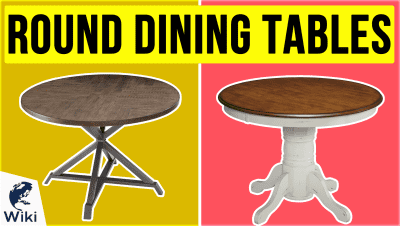GOP Is Short For Grand Old Party
If you follow American politics, you've probably seen the term "GOP" on a news broadcast or in an article. It's short for "Grand Old Party" and is commonly used to refer to the Republican Party. In this guide, we'll discuss the origins of the term, as well as how it's used in modern politics. This video was made with Ezvid Wikimaker.
Where Did the Term "GOP" Come From?
The origins of the moniker can be traced back to 1875. The Congressional Record was recounting the Republicans' military success and referred to them as "this gallant old party." A year later, another article used a similar phrase, this time calling them the "grand old party." The nickname soon gained popularity. It was first abbreviated to GOP in 1884.
Who Uses the Term "GOP?"
- Newspapers
- Republican Party officials
- Broadcast news
- Internet articles
The Role of Political Parties in America
What is the GOP Known For?
- Free market capitalism
- Social conservatism
- States' rights
- Strong national defense
- Deregulation
Conclusion
The Republicans have been referred to as the GOP for over a century, and the nickname will likely stick around for years to come. But although politically active citizens and US history buffs are familiar with it, not all Americans know what this abbreviation means. So if you ever see someone get confused by the term, be sure to let them in on its fascinating origins.
In Depth
Chances are you've heard the phrase "GOP" during political conversations and in media headlines. It's used interchangeably with "Republican" when referring to the popular conservative party. How and why a moniker like this sprung up isn't common knowledge among many Americans. This term is more than just an endearing nickname. The Republican Party officially uses the initials to the public.
It also serves as the URL for the R.N.C. website. On their page, they explain that it stands for "Grand Old Party." But their roots trace back farther than that. To add to the confusion, Republicans were closer to Democrats in ideology when both parties formed. We're here to demystify the uncertainty behind this acronym and shed some light on its origins.
After America's founding, there was The Democratic Republican Party. This political group was formed around 1792 by Thomas Jefferson and James Madison. It was created to combat the policies of The Federalist Party, which was run by Alexander Hamilton. Hamilton's side argued that a strong national government and a friendly relationship with Great Britain was the key to success. They also opposed France's revolutionary antics at the time.
Hamilton's side argued that a strong national government and a friendly relationship with Great Britain was the key to success.
Opponents feared this could lead back to monarchy. It was also seen as a betrayal of what new Americans had just fought for in the split from England.
Their guiding philosophy was what is known as republicanism. It is a type of democracy that opposes monarchy, inherited power and aristocracy. In order to promote a successful collection of self governing bodies, this party borrowed ideas from Ancient Greco Roman politics and the Renaissance. These qualities formed the basis for the American Revolution and much more. Republican virtues were centered on eliminating greed and immorality in leadership. By sacrificing personal gain for the common good they felt they could eradicate corruption.
This meant that a strong sense of public service and a denial of monetary luxuries was vital.
This meant that a strong sense of public service and a denial of monetary luxuries was vital.
The party saw strength primarily in the South and argued for the state's rights over federal law. When Jefferson won the presidential election of 1800, they came to greater power. Outside of New England, The Democratic Republican Party dominated Congress and many state governments. As years passed, the group split into factions because of internal divisions. Lacking a center, it realigned into new committees. One followed Andrew Jackson in 1828 and became what we now know as the Democratic Party.
Another offshoot was led by John Quincy Adams and Henry Clay in the 1830s. These men formed what would later become the Whig Party. It began to fall apart when confronted with whether to continue to expand slavery. This is where the modern Republican Party comes in. They were anti slavery, and formed the side that became what we're currently familiar with. Not only did this new party champion liberty and equality, but it also supported strong government programs. Its first candidate was Abraham Lincoln.
Along with Lincoln's election and the victory of the Union, the Republican Party saw extraordinary popularity. It dominated the political scene until the Great Depression. Because of this, it was frequently referred to as the "grand old party" in print. When candidate Benjamin Harrison became president in 1888, the New York Tribune published a glowing article.
Along with Lincoln's election and the victory of the Union, the Republican Party saw extraordinary popularity.
It was one of many media headlines that heaped praise on Republicans. The author stated that under the rule of the Grand Old Party the US was more prosperous than ever before. After this, the nickname stuck. It was shortened and has since been used in many stories about Republicans. Years prior, an 1874 edition of Harper's Weekly published a political cartoon. Famed artist Thomas Nast had drawn a donkey to represent the Democratic Party attempting to scare a fearless elephant labeled "The Republican Vote." The symbol came into fashion and was adopted alongside the acronym GOP. These representations of the Republican Party have endured to modern times.
GOP was also used for "Gallant Old Party" and the "Go Party", though neither stuck. Americans have come up with a host of incorrect answers as to what the initials stand for. A few mocking examples include "Gold Only Party" and "Greed Over People." A large faction also wrongly assumes it stands for "Government of the People." This might be due to the last line of the Gettysburg Address, delivered by Abraham Lincoln in 1863. It advocated for a government by the people, for the people.
There are also signs of citizens moving away from the term. Newspaper outlets have picked up on the fact that readers may not know what it means. They may quote the term or use it interchangeably after it was established by someone in an article. Republicans are also aware of their portrayal as traditionalists who only have old ideas. They call themselves the "Party of the Future" on their website.
There are also signs of citizens moving away from the term.
Since its inception, the Republican Party has experienced formidable growth and change. Despite these reinventions, GOP will likely remain an identifier for the group for some time to come.














